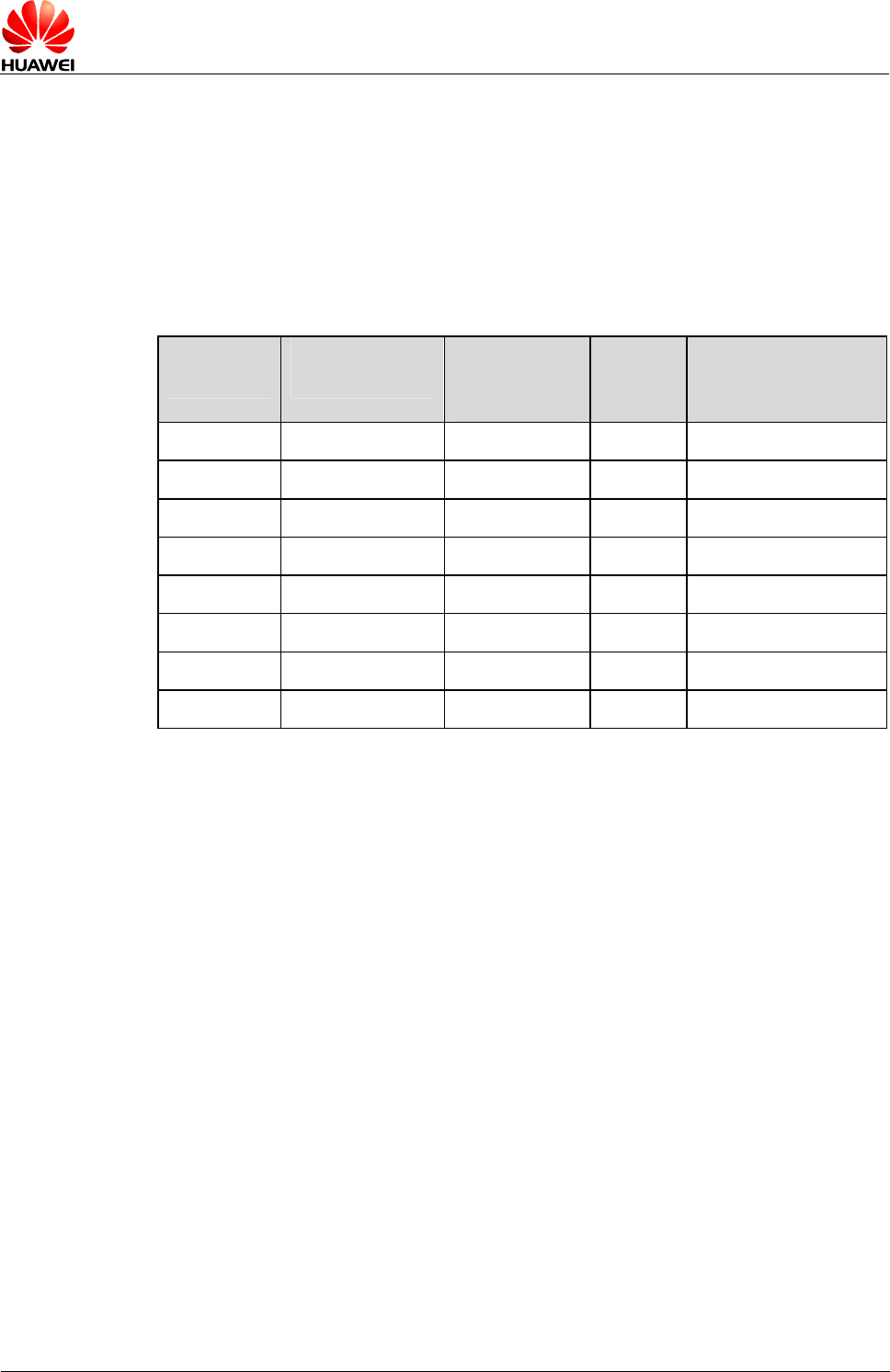
HUAWEI EM820W HSPA+ PC Embedded Module
Hardware Guide RF Specifications
Issue 01 (2010-12-31)
Huawei Proprietary and Confidential
Copyright © Huawei Technologies Co., Ltd.
21
z
Adding a bandpass filter to the Wi-Fi channel to filter the WCDMA, GSM850,
GSM900, DCS, and PCS signals
z
Ensuring sufficient isolation between the master antenna of the data card
module and the Wi-Fi antenna
Table 4-4 lists the requirements for the isolation between the master antenna and the
Wi-Fi antenna in different frequency bands according to the interference suppression
supported by the filter in different frequency bands.
Table 4-4 Isolation between the master antenna and the Wi-Fi antenna
Frequency
Band
Transmit
Frequency
Conducted
Transmit
Power (dBm)
Ant
Isolator
(dB)
Wi-Fi Front End
Filter Attenuation
(dB)
UMTS2100 1920–1980 MHz 24 11 34
UMTS1900 1850–1910 MHz 24 11 34
UMTS850 824–849 MHz 24 10 36
UMTS900 880–915 MHz 24 10 36
GSM850 824–849 MHz 33 18 36
GSM900 880–915 MHz 33 18 36
DCS 1710–1785 MHz 30 17 34
PCS 1850–1910 MHz 30 17 34
S11 or VSWR
S11 (return loss) indicates the degree to which the input impedance of an antenna
matches the reference impedance (50 ohm). S11 shows the resonance feature and
impedance bandwidth of an antenna. Voltage standing wave ratio (VSWR) is another
expression of S11. S11 relates to the antenna efficiency. S11 can be measured with a
vector analyzer.
The following S11 values are recommended for the antennas on laptops:
z
S11 of the master antenna < -6 dB
z
S11 of the slave antenna < -6 dB
z
S11 of the GSP antenna < -10 dB
z
S11 of the Wi-Fi antenna < -10 dB
Polarization
The polarization of an antenna is the orientation of the electric field vector that rotates
with time in the direction of maximum radiation.
The linear polarization is recommended for the antennas on laptops.
